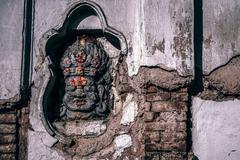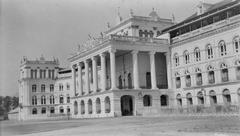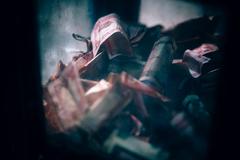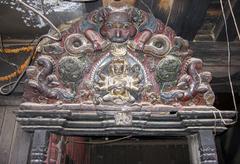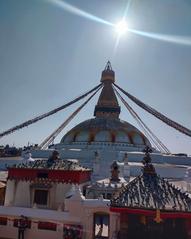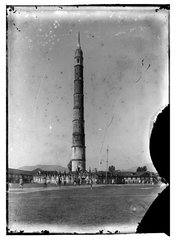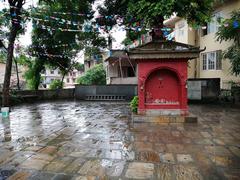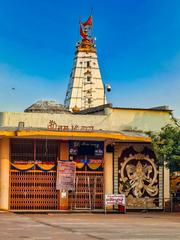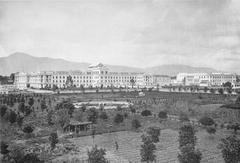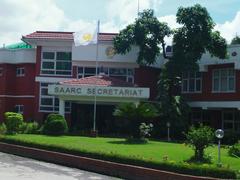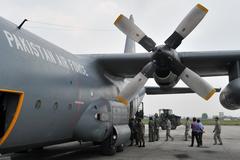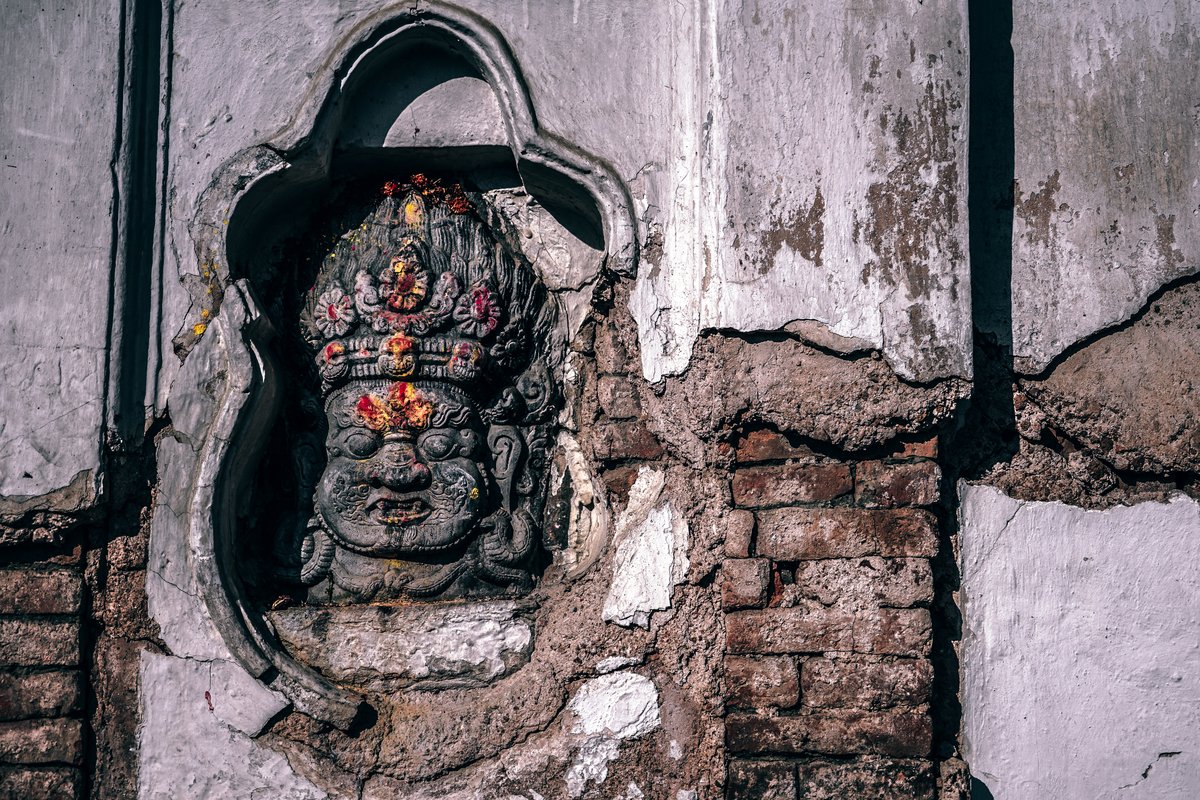
Narayanhiti Palace Visiting Hours, Tickets, and Kathmandu Historical Sites Guide
Date: 14/06/2025
Introduction
Narayanhiti Palace Museum, located at the heart of Kathmandu, stands as a monumental testament to Nepal’s royal heritage and its dramatic shift from monarchy to republic. Once home to the Shah kings, the palace now opens its regal doors to the public, offering insight into centuries of Nepalese history, architecture, and political change. This guide details the palace’s historical evolution, architectural highlights, visiting hours, ticketing procedures, accessibility, and tips for exploring surrounding Kathmandu historical sites (Narayanhiti Palace Museum; Wikipedia).
Table of Contents
- Historical Evolution of Narayanhiti Palace
- Political and Cultural Significance
- Visiting Narayanhiti Palace Museum: Practical Information
- Frequently Asked Questions (FAQ)
- Summary and Conclusion
- References
Historical Evolution of Narayanhiti Palace
Early Origins and Royal Transition
The name “Narayanhiti” is derived from “Narayana” (Vishnu) and “hiti” (Newari for water spout), signifying the palace’s spiritual and historical roots. In 1886, Prime Minister Bir Shumsher Jang Bahadur Rana commissioned a new palace for King Prithvi Bir Bikram Shah, shifting the royal residence from Hanuman Dhoka to Narayanhiti and marking a major transition in Nepalese royalty (Wikipedia; Narayanhiti Palace Museum).
Architectural Transformation and Modernization
The palace underwent reconstruction after the 1934 earthquake, which claimed the lives of two young princesses. Its most significant transformation occurred in the 1960s when King Mahendra commissioned American architect Benjamin Polk to design a new palace that harmonized traditional Nepalese motifs with modernist influences. Completed in 1969, the palace features 52 rooms named after Nepal’s districts and grand entrances named after Himalayan peaks, reflecting national identity and grandeur (Kathmandu Post; mexicohistorico.com).
The Palace as a Center of Monarchical Power
Narayanhiti Palace was more than a home; it was the epicenter of statecraft. Lavish halls hosted coronations, diplomatic receptions, and the swearing-in of prime ministers. The opulent interiors—including the throne room, banquet halls, and state reception areas—symbolized royal authority and Nepal’s evolving identity (nepalnomad.com; Wikipedia).
The 2001 Royal Massacre
A defining chapter in the palace’s history is the 2001 royal massacre, in which King Birendra, Queen Aishwarya, and other family members were killed. This tragedy accelerated Nepal’s political upheaval and is memorialized within the palace, where the site—with visible bullet holes and interpretive displays—serves as a place of national reflection (altitudehimalaya.com; Nepal Monitor).
From Monarchy to Museum
Following the abolition of the monarchy in 2008, Narayanhiti Palace was converted into a public museum. The transformation was both symbolic and functional, representing Nepal’s new republican era. The museum now showcases royal regalia, the Gold State Coach, the dazzling Sripech crown, and personal effects of the royal family. The opening of Shree Sadan in 2020 further enriched the museum’s offerings, granting visitors access to the private life of King Birendra (Narayanhiti Palace Museum; altitudehimalaya.com).
Political and Cultural Significance
Narayanhiti Palace embodies Nepal’s journey from monarchy to republic. Its architecture merges traditional Nepalese design with Victorian and modernist aesthetics, symbolizing the country’s aspiration for progress while honoring its heritage. The palace’s conversion into a museum turned a symbol of exclusivity into a space for public memory, learning, and national reconciliation (mexicohistorico.com; Kathmandu Post).
As a major tourist destination, the palace contributes to Kathmandu’s cultural economy and supports local businesses. Ongoing preservation efforts ensure that its legacy endures for future generations, serving as a testament to Nepal’s resilience and transformation (veronikasadventure.com).
Visiting Narayanhiti Palace Museum: Practical Information
Visiting Hours
- Thursday to Monday: 10:30 AM – 2:30 PM
- Tuesday: 10:30 AM – 1:30 PM
- Wednesday & Public Holidays: Closed
(HopNepal; Wonders of Nepal)
Check the official website or local sources for updates, especially around Nepali holidays.
Ticket Prices and Purchase
- Nepali Students: NPR 50 (with ID)
- Nepali Citizens: NPR 200
- SAARC & Chinese Nationals: NPR 500
- Other Foreign Nationals: NPR 1,000
- Children under 3: Free
(Stunning Nepal; HopNepal)
Tickets are available at the entrance. Payment must be made in Nepali rupees.
Security and Visitor Regulations
- No photography or videography inside the palace; cameras and mobile phones must be stored at the security check.
- Bags are subject to inspection; large backpacks may need to be stored.
- Dress modestly and respectfully.
- Food, drinks, and smoking are not permitted inside the museum (Stunning Nepal).
Accessibility and Facilities
- Wheelchair Access: Main areas are accessible, though some historic sections may be challenging.
- Restrooms: Available near the entrance and in the gardens.
- Cloakroom: Storage for restricted items is provided at the entrance.
- Parking: Limited; taxis or public transport are recommended (Wonders of Nepal).
Guided Tours and Special Events
Guided tours in English and Nepali are available and recommended for deeper understanding. Book at the entrance or through local agencies (Nepali Guides). Special exhibitions and commemorative events are occasionally held; check the museum calendar for details (Narayanhiti Palace Museum - Events & Notices).
Highlights and Notable Exhibits
- Throne Room (Gaddi Baithak): The grand ceremonial hall, featuring regal décor and bullet holes from the 2001 massacre (MakeMyTrip).
- Gold State Coach: Gifted by Queen Elizabeth II, used during royal processions.
- Sripech Crown: Adorned with hundreds of diamonds and pearls, symbolizing royal authority.
- Shree Sadan: Former residence of King Birendra, showcasing his personal life (TravelTriangle).
- Royal Massacre Site: Preserved with interpretive panels and bullet-marked walls.
- Art and Heritage Collections: Paintings, portraits, ceremonial gifts, and rare artifacts (Narayanhiti Palace Museum).
Nearby Attractions & Travel Tips
- Garden of Dreams: A tranquil neoclassical garden nearby.
- Thamel District: Kathmandu’s lively tourist hub.
- Kaiser Library: Historic library with rare manuscripts.
- Kathmandu Durbar Square: UNESCO World Heritage site of palaces and temples.
Tips:
- Visit early to avoid crowds.
- Allocate 2–3 hours for a thorough visit.
- Combine your trip with other central Kathmandu landmarks (TravelTriangle; Wonders of Nepal).
Frequently Asked Questions (FAQ)
Q: What are the Narayanhiti Palace Museum visiting hours?
A: Thursday–Monday: 10:30 AM–2:30 PM; Tuesday: 10:30 AM–1:30 PM; closed Wednesdays and public holidays.
Q: How much are tickets?
A: NPR 1,000 for foreign nationals; NPR 200 for Nepali citizens; discounts for students and children.
Q: Can I take photos inside?
A: No, photography is strictly prohibited inside the palace; permitted only in the gardens.
Q: Is the palace wheelchair accessible?
A: Main areas are accessible, but some historic sections may be difficult.
Q: Are guided tours available?
A: Yes, in English and Nepali; book at the entrance or in advance.
Q: How long does a visit take?
A: Typically 2–3 hours.
Summary and Conclusion
Narayanhiti Palace Museum embodies Nepal’s royal grandeur and its transformative journey into a republic. The museum’s meticulously preserved halls, royal artifacts, and somber reminders of the past offer a deeply enriching window into Nepal’s history, politics, and culture. With clear visiting hours, well-organized ticketing, and proximity to other key Kathmandu historical sites, the palace is an essential stop for history enthusiasts and casual travelers alike.
For the latest updates on visiting hours, special events, and travel tips, visit the official website or download the Audiala app for personalized guidance.
References
- Narayanhiti Palace Museum Official Website
- Wikipedia: Narayanhiti Palace Museum
- The Architectural Marvel of Narayanhiti Palace in Nepal - mexicohistorico.com
- Narayanhiti Palace Museum - altitudehimalaya.com
- Narayanhiti Palace Museum Tour - Nepali Guides
- Narayanhiti Palace Museum - Wonders of Nepal
- The Architecture of Power: Some Insights into Narayanhiti Palace Museum - Kathmandu Post
- Narayanhiti Palace Museum Travel Guide - TravelTriangle
- Narayanhiti Durbar (Narayanhiti Palace) Kathmandu Nepal - HopNepal
- Narayanhiti Palace Museum Guide - Stunning Nepal
For detailed visitor experiences, virtual tours, and additional travel resources on Kathmandu historical sites, download the Audiala app and follow us on social media.
